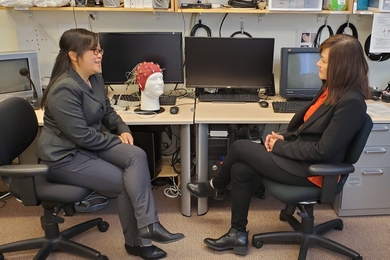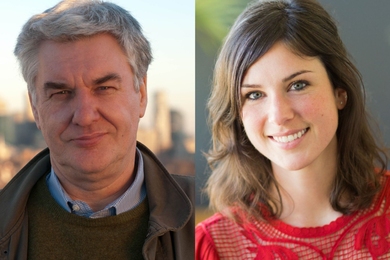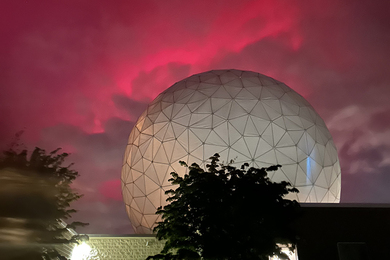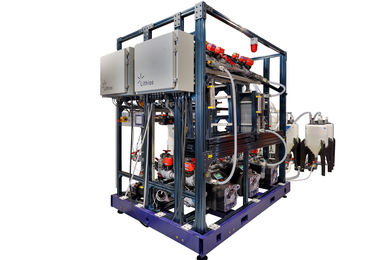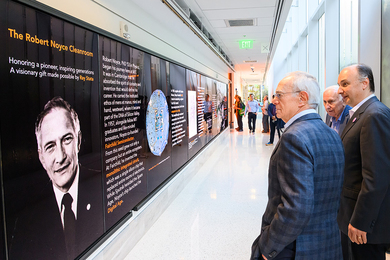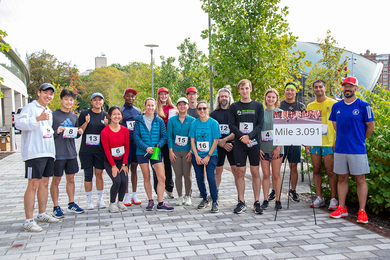��������������������������� One of the Institute's premier teachers, Dr. Harold Abelson, has received new recognition as the winner of the 1995 Taylor L. Booth Education Award given by the IEEE (Institute of Electrical and Electronics Engineers) Computer Society.
He is being honored, according to the citation, "for continued contributions to the pedagogy and teaching of introductory computer science, exemplified by the Logo and Scheme languages and their associated methodologies."
The award is given to an individual who meets two or more of the following criteria in the computer science and engineering field: achieving recognition as a teacher of renown; writing an influential text; leading, inspiring or providing significant education content during the creation of a curriculum in the field; and inspiring others to a career in the field.
The award honors the late Professor Booth of the University of Connecticut, who served the Society for 16 years in various educational activities, and whose career exemplified an outstanding record in computer science and engineering education.
Dr. Abelson, Class of 1922 Professor of Computer Science and Engineering and a MacVicar Faculty Fellow, is regarded as a pioneer in computer science education whose innovations have had an impact on many campuses.
He is co-author, with his Course VI colleague Dr. Gerald J. Sussman, Matsushita Professor of Electrical Engineering, of Structure and Interpretation of Computer Programs. The book has been adopted by more than 150 colleges and universities. The subject, 6.001, which Professors Abelson and Sussman have shaped, has been widely emulated.
Dr. Abelson also has overseen for MIT the university's connection with the Research Science Institute founded by the Center for Educational Excellence, which brings about 70 top high school science students to MIT each year to work as research interns.
Dr. Abelson joined MIT in 1973, the year he received the PhD from the Institute. He received the AB in 1969 from Princeton University.
He currently is on sabbatical with Hewlett-Packard Laboratories in Palo Alto, CA.
��������������������������� This year's winning script in the Clauder Competition, dedicated to encouraging new dramas from New England playwrights, is a play entitled Mercy by Laura Harrington, a lecturer in the Music and Theater Arts section.
Ms. Harrington receives a $3,000 award and a production of her play by a major theater company, in this case Shakespeare and Company, which will present Mercy during its 1996 Summer Festival of Plays.
The Boston Globe describes Mercy as a surreal and impressionistic story of a dying sculptor trying to reunite her family as her final creative act.
��������������������������� Three of the four Keynote Lecturers at the Cell Culture Engineering Conference in San Diego, sponsored by the Engineering Foundation, were MIT faculty members and members of the Biotechnology Process Engineering Center. The international conference, held every two years, deals with one of the new fields of learning in biotechnology.
The keynote speakers were Dr. Hermann Steller, associate professor of biology and Assistant Howard Hughes Medical Institute Investigator ("Genetics of Programmed Cells"); Dr. Gregory Stephanopoulos, professor of chemical engineering ("Process Monitoring and Process Data Base Mining"); and Dr. Daniel I. C. Wang, Institute Professor and professor of chemical engineering ("New Directions and Technologies in Cell Cultures"). Dr. Wang, director of the Biotechnology Process Engineering Center, also was one of the keynote lecturers at the North-South Conference on Biotechnology held in Mexico.
A version of this article appeared in MIT Tech Talk on January 31, 1996.
